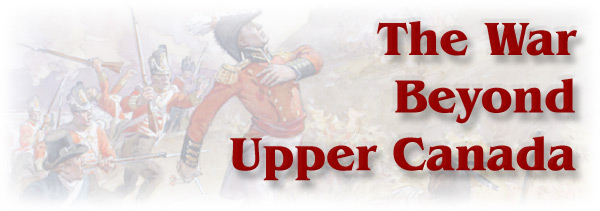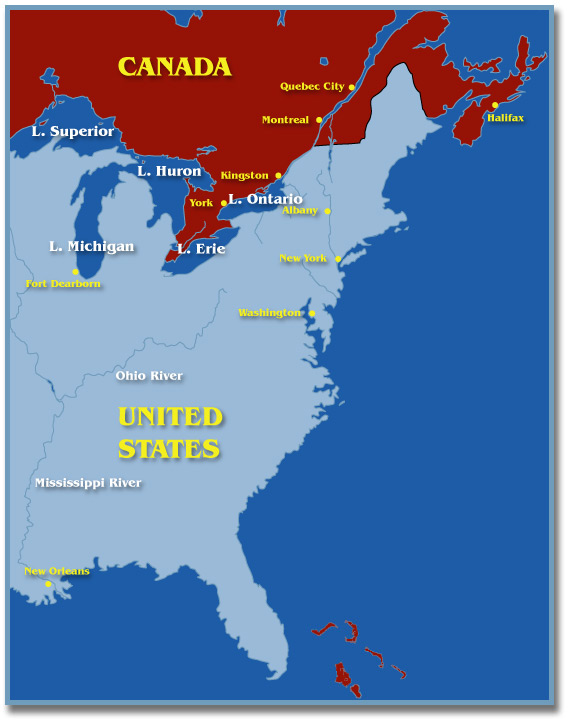
Table of Contents
Skip Navigation
Home | Setting the Stage | Battlegrounds | Militia and Civilian Life
Prisoners of War | Loyalty and Treason | The War Ends
After the War | Chronology | Soldiering in Canada
Important Figures | Important Places| Glossary
Sources | Links | The Making of a Virtual Exhibit
Home | Setting the Stage | Battlegrounds | Militia and Civilian Life
Prisoners of War | Loyalty and Treason | The War Ends
After the War | Chronology | Soldiering in Canada
Important Figures | Important Places| Glossary
Sources | Links | The Making of a Virtual Exhibit
|
All of these colonies in turn were part of the British
Empire that as a whole was at war with the United
States. With the defeat of Napoleon in France, England
was able to move more troops to the North American conflict. It
in turn led to conflicts that ranged far beyond the borders of
Upper Canada. |
||||||||||||||
 |
||||||||||||||
|
|
||||||||||||||
|
||||||||||||||
 |
||||||||||||||
|
||||||||||||||
| [ Return to top
of page ] |
||||||||||||||
 he
main focus of the War of 1812 was
he
main focus of the War of 1812 was 



